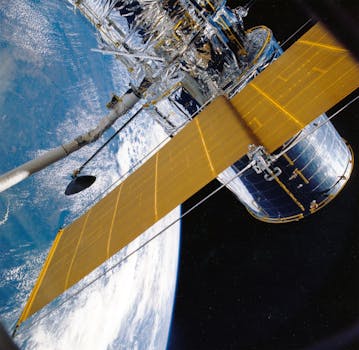
The Rise of Mega-Constellations: Latest Updates in Satellite Telecommunications
The Rise of Mega-Constellations: Latest Updates in Satellite Telecommunications. The satellite telecommunications industry is undergoing a significant transformation with the rise of mega-constellations. These mega-constellations consist of thousands of small satellites being launched into low Earth orbit to provide global internet connectivity. Companies such as SpaceX, Amazon, and OneWeb are leading the charge in this new era of space technology.
The concept of mega-constellations is not new, but recent advancements in satellite technology and launch capabilities have made it more feasible to deploy large numbers of satellites into orbit. The benefits of mega-constellations are numerous, including providing internet connectivity to remote and underserved areas, improving global communication networks, and enabling new applications such as Earth observation and navigation.
One of the key players in the mega-constellation market is SpaceX, which has launched over 1,000 satellites into orbit as part of its Starlink constellation. Starlink aims to provide high-speed, low-latency internet connectivity to consumers and businesses around the world. The constellation uses a phased array antenna technology to enable rapid beam switching and high-gain performance, allowing for high-speed data transfer.
Another company making significant strides in the mega-constellation market is Amazon, which has announced plans to launch over 3,000 satellites into orbit as part of its Kuiper Systems constellation. Kuiper Systems aims to provide fast, reliable, and affordable internet connectivity to underserved communities around the world. The constellation will use a combination of geostationary and non-geostationary orbit satellites to provide global coverage.
In addition to these private companies, governments around the world are also investing in mega-constellation technology. For example, the European Space Agency (ESA) has launched several satellites as part of its Galileo constellation, which provides navigation and timing services to users around the world. The Galileo constellation consists of 30 satellites in medium Earth orbit and provides high-precision positioning and timing services.
Challenges and Opportunities
While the rise of mega-constellations presents many opportunities for the satellite telecommunications industry, it also poses several challenges. One of the main concerns is the risk of collisions between satellites and other objects in orbit, which could lead to a significant increase in space debris. To mitigate this risk, companies and governments are working together to develop new technologies and regulations for tracking and removing debris from orbit.
Another challenge facing the mega-constellation industry is the issue of radio frequency interference (RFI). With thousands of satellites transmitting signals in the same frequency bands, there is a risk of interference between different constellations and other satellite systems. To address this challenge, companies are working together to develop new technologies and standards for mitigating RFI and ensuring seamless communication between different systems.
Despite these challenges, the rise of mega-constellations is expected to have a significant impact on the satellite telecommunications industry. With the ability to provide global internet connectivity, mega-constellations will enable new applications and services such as remote healthcare, online education, and e-commerce. The constellations will also provide new opportunities for scientific research, Earth observation, and navigation.
Conclusion
In conclusion, the rise of mega-constellations is transforming the satellite telecommunications industry, with thousands of small satellites being launched into low Earth orbit to provide global internet connectivity. While there are challenges to be addressed, the benefits of mega-constellations are numerous, and the industry is expected to have a significant impact on global communication networks and new applications. As the technology continues to evolve, we can expect to see new innovations and opportunities emerge in the field of satellite telecommunications.



